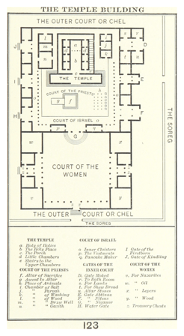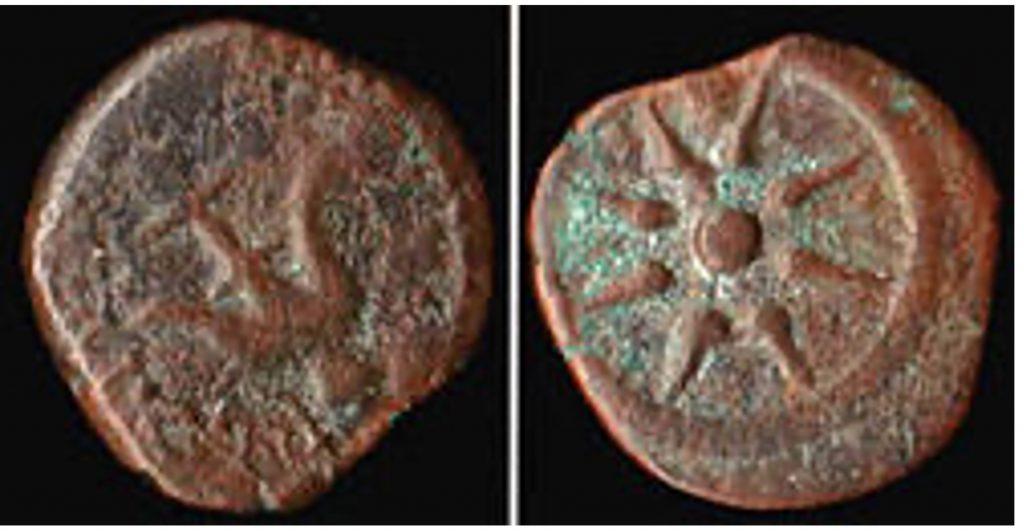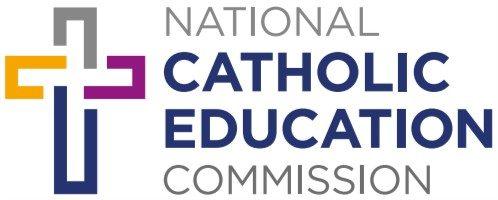41 He sat down opposite the treasury, and watched the crowd putting money into the treasury. Many rich people put in large sums. 42 A poor widow came and put in two small copper coins, which are worth a penny. 43 Then he called his disciples and said to them, “Truly I tell you, this poor widow has put in more than all those who are contributing to the treasury. 44 For all of them have contributed out of their abundance; but she out of her poverty has put in everything she had, all she had to live on.
New Revised Standard Version Bible: Catholic Edition, copyright © 1989, 1993 the Division of Christian Education of the National Council of the Churches of Christ in the United States of America. Used by permission. All rights reserved.
What to do with this educator’s commentary
This commentary invites you as a teacher to engage with and interpret the passage. Allow the text to speak first. The commentary suggests that you ask yourself various questions that will aid your interpretation. They will help you answer for yourself the question in the last words of the text: ‘what does this mean?’
This educator’s commentary is not a ‘finished package’. It is for your engagement with the text. You then go on to plan how you enable your students to work with the text.
Both you and your students are the agents of interpretation. The ‘Worlds of the Text’ offer a structure, a conversation between the worlds of the author and the setting of the text; the world of the text; and the world of reader. In your personal reflection and in your teaching all three worlds should be integrated as they rely on each other.
In your teaching you are encouraged to ask your students to engage with the text in a dialogical way, to explore and interpret it, to share their own interpretation and to listen to that of others before they engage with the way the text might relate to a topic or unit of work being studied.
Structure of the commentary:
See the general introduction to Mark.
Text & textual features
Characters & setting
Ideas / phrases / concepts
Questions for the teacher
The world in front of the text
Questions for the teacher
Meaning for today / challenges
Church interpretations & usage
The World Behind the Text
See general introduction to Mark.
The world of the text
Text & textual features
This text is a bridge between Jesus denouncing the scribes for their devouring of the savings of widows (Mark 12: 38-40) and the next section of the gospel which contains the prediction of the Temple’s destruction ends with Jesus’ anointing at Bethany (Mark 14: 3-9).
Jesus has seated himself opposite the Temple Treasury (see Ideas, phases, concepts) and is observing the crowd who are making donations. The nature of the Treasury made contributing a very public act. A poor widow (see Ideas/phrases/concepts) makes her contribution of two small copper coins (see Ideas/phrases/concepts). Jesus then ‘calls’ his disciples and makes a pronouncement on the situation. The introductory formula [Truly I tell you..] indicates the importance of Jesus’ teaching to the disciples.
Jesus affirms the widow’s giving not because it is generous, but because she does not give out of her abundance, rather out of her poverty she gives all she has to live on. Mark makes a point of noting that she has two coins; she could have kept one, but rather she gives away both. Too small in monetary terms to be her Temple tax, her gift becomes one simply of giving; with no obligation attached. As such, it seems unwise, even misguided or foolish. Surely the sensible thing would be to keep one, albeit very small, coin. The praise of Jesus challenges us: Are we as willing as this un-named woman to give it all away in trust and dependence on God?
When read with the previous text (Mark 12:38-40), this text can be viewed as further criticism of the scribes. Part of the role of a scribe was a legal one where they administered estates and could profit from widows. These scribes are regarded by Jesus as hypocritical as those who appeared more pious increased their chances of receiving this work. The scribes and Sadducees who maintained the Temple had also created a culture where the poor felt they had to donate regardless of their circumstances.
This story links to the woman who anoints Jesus at Bethany (Mark 14: 3-9) as both women are models of generosity, giving extravagantly at personal cost. These two texts model the characteristic of discipleship that Jesus has spoken of constantly: selfless giving, in acts of service. This woman, and the one in 14:3-9, anticipate and foreshadow Jesus’ own selfless gift of service on the Cross. The generosity of the widow, giving all she had to the Temple increases her vulnerability. She becomes more dependent on others to follow the scriptures to look after her (Deuteronomy 14: 28-29, 24:17-21).
Ideas/ phrases/ concepts
This story is set in the Temple in Jerusalem with Jesus sitting near the Temple Treasury. The Temple Treasury was located in the Court of the Women (see map).
The characters are-
- Jesus who is observing those making donations to the Temple Treasury;
- the crowd who are making donations to the Treasury, some of whom are rich;
- the poor widow who donates two copper coins;
- Jesus’ disciples who are called to listen to his teaching.
- not mentioned in this text but implied, are the scribes who benefit from the legal work they do for widows.

Temple Treasury:
The Temple Treasury was situated in the Court of the Women, an outer court of the Temple in Jerusalem. The Court of the Women was the second court after the Court of the Gentiles and was as far as women were allowed into the Temple. The Temple Treasury consisted of thirteen treasure chests, eleven in the Court of the Women for voluntary offerings. Each chest was for a different cause (wood for the burnt offering, incense, the value of offerings of young pigeons etc.). The treasure chests were trumpet shaped, small at the top and broad at the bottom. The dropping of coins into the chests was amplified because of the design and others could get a sense of the donation that had been given ‘in secret’. At the time of Jesus the Sadducees maintained the Temple
Widow:
Widows were the most marginalised group of adults in first century Palestine. The Hebrew word for widow denotes one who is silent, unable to speak. Widows were not always poor, but without a husband they lacked status, protection and identity. They could not inherit from their husband, so widows were vulnerable financially and legally, relying on the generosity of other male relatives.
In the Old Testament, the care of widows is a recurring theme with Israel urged to show mercy on them to match God’s mercy. Widows became a stereotypical symbol of the poor and oppressed.
Coins
In the NRSVCE translation of this text, the widow contributes two small copper coins equivalent to a penny. This designates the smallest coin/value in circulation. It is believed that the sum the widow gives is equivalent to one sixty-fourth of the daily wage at the time.
Some translations have the widow donating two ‘mites’. This term is believed to have stemmed from the King James translation of the Bible and a coin used in Europe at that time.

Scribes
(see glossary) In the previous passage, Mark 12: 38-40, which is sometimes included when this text is liturgically (see below), Jesus denounces the scribes who ‘devour widow’s houses’ (Mark 12: 40). The scribes carried out some legal functions including being trustees for estates, some would extract more payment than necessary from widows for this work, leaving widows in states of poverty. It is believed that it was not unusual for the scribes to dress well and be seen as pious by saying long prayers to attract this estate work.
Questions for the teacher:
The world in front of the text
Questions for the teacher:
Please reflect on these questions before reading this section and then use the material below to enrich your responsiveness to the text.
Meaning for today/ challenges
In this text we could consider that Jesus is observing the hearts of those who are donating to the Treasury. The rich are donating from what they have in abundance. This can be likened to the world today where celebrities may use ‘virtue signalling’ making large donations to causes. Their intention is to receive praise, in contrast to those who may fully embrace a cause and actively work to change a social situation. Do we ‘clang our coins’ into the treasure for others to notice, by making competitions out of fundraising ventures? Is our gift to God out of our abundance or our poverty, however we may define that?
Jesus is not critical of having wealth. However, both here and in the call of the rich young man, he indicates that it can ’get in the way’ of a life as a disciple. Is this the same for individuals? The Church? Does the maintenance of our schools, parishes and buildings stand as an obstacle to our trust in God?
Church interpretation
A similar text to Mark 12: 41-44 occurs in Luke 21: 1-4. The story has been used in the past as a provocation for planned giving campaigns due to the widow’s donation to the Temple. However, a more contemporary understanding would focus on the Temple scribes who have created conditions leading to the woman donating all that she has to live on and who profit from the vulnerability of widows. There is a challenge in the text of institutional religion using followers rather than being merciful.
In Mark’s text Jesus addresses his disciples, the challenge to them is to not only to give from what they have in abundance of but to give what they have out of faith.
Liturgical Usage
This text is used for the 32nd Sunday of Ordinary Time, Year B. The full gospel is Mark 12: 38-44, which includes Jesus denouncing the scribes and their treatment of widows. The abridged gospel focusses on this text, Mark 12: 41-44.
